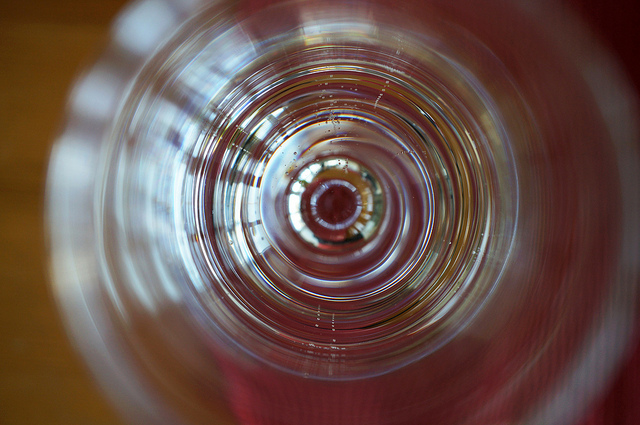An international team of researchers from Europe, China and Japan has collaborated to develop a new method for manufacturing hybrid glass using new metal-organic frameworks (MOFs).
 Glasses Using MOF Liquids" />
Glasses Using MOF Liquids" />
Rosmarie Voegtli / Flickr / CC Licence
The team has published the study paper entitled, “Hybrid glasses from strong and fragile metal-organic framework liquids,” in the journal, Nature Communications.
The ‘designer glasses’ could be used for large scale capture arnd storage of carbon, and for advanced photonics applications.
MOFs are sponge-like, porous materials wih a cage-like structure. These structures are made up of metal ions that are linked together by organic bonds. The porous nature of the material allows it to specifically adsorb and store particular target molecules, a property that holds promise for separation of toxic gas, hydrogen storage and carbon capture. These MOFs act like a sieve which separates materials based on their chemical identity and size.
However, significant difficulties have been faced in industrial scale production of thin films, linings and fibrous structures using MOF powders. This is because MOFs do not have mechanical and thermal properties as good as those of other materials like metals or ceramics. Earlier, when MOFs were processed using melt-casting or sintering, they collapsed structurally.
In this study, the research team found that heating carefully selected MOF under argon increased its decomposition temperature. This temperature was sufficient to prevent the breaking down of the powders and just allowed melting of the material. The melted material could be cast, recrystallised and shaped into the desired form as solid structures that could be used for separation and storage of gases.
Dr Thomas Bennett from the Department of Materials Science and Metallurgy at the University of Cambridge says:
Traditional methods used in melt-casting of metals or sintering of ceramics cause the structural collapse of MOFs due to the structures thermally degrading at low temperatures. Through exploring the interface between melting, recrystallisation and thermal decomposition, we now should be able to manufacture a variety of shapes and structures that were previously impossible, making applications for MOFs more industrially relevant.
The researchers added that glasses produced by cooling the liquids rapidly are materials of a new category. The final material with the desired chemical functionalities can be obtained by adding specific elements to the MOFs before they are melted and cooled.
Professor Yuanzheng Yue from Aalborg University adds: “A second facet to the work is in the glasses themselves, which appear distinct from existing categories. The formation of glasses that contain highly interchangeable metal and organic components, in is highly unusual, as they are normally either purely organic, for example in solar cell conducting polymers, or entirely inorganic, such as oxide or metallic glasses. Understanding the mechanism of hybrid glass formation will also greatly contribute to our knowledge of glass formers in general.”
The research team studied the metal organic frameworks at the atomic level using the capabilities of the Diamond Light Source synchrotron in the UK.
Professor Trevor Rayment, Physical Science Director at Diamond, comments: "This work is an exciting example of how work with synchrotron radiation which deepens our fundamental understanding of the properties of glasses also produces tantalising prospects of practical applications of new materials. This work could have a lasting impact on both frontiers of knowledge.”
The new manufacturing technique could enable production of 'chemically designed' glasses by swapping different organics and materials in and out of the MOFs before they are melted.